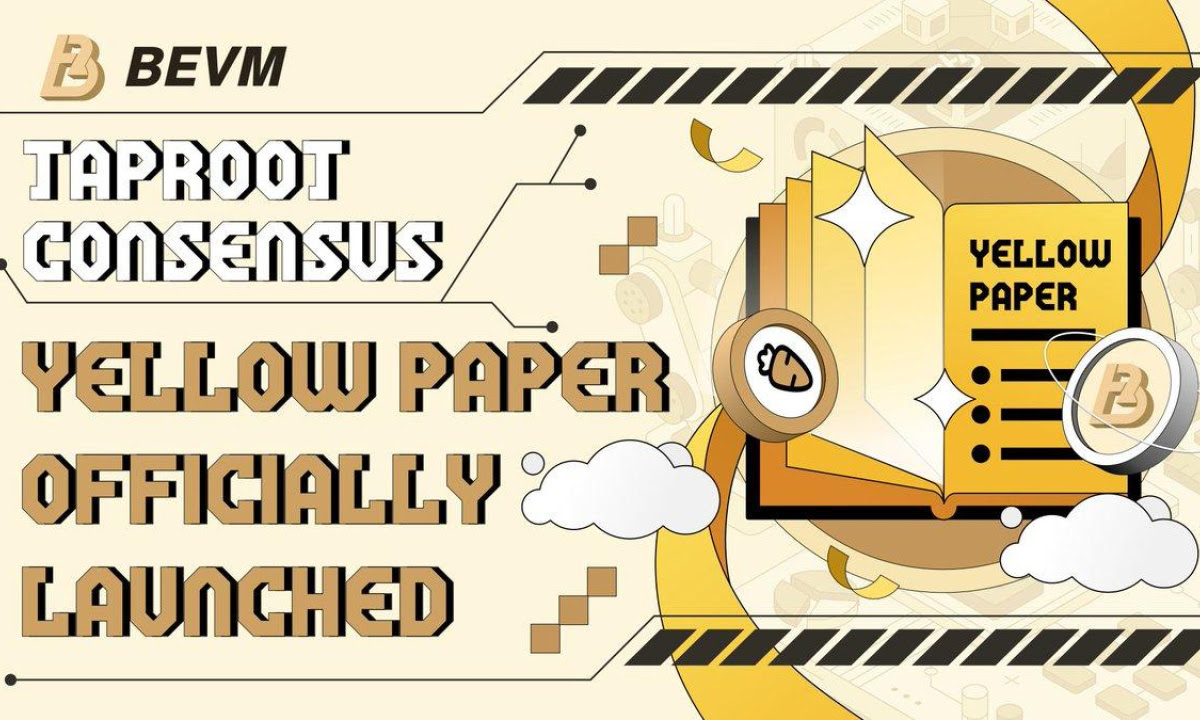
BEVM, an EVM-compatible Bitcoin Layer 2 solution, recently released its technical yellow paper, “Taproot Consensus: A Decentralized BTC Layer 2 Solution.”
The yellow paper outlines the implementation of Taproot Consensus, a Bitcoin Layer2 solution built on native Bitcoin technologies. Taproot Consensus leverages native Bitcoin technologies including MAST, Bitcoin SPV nodes, and Schnorr signatures.
The Taproot Consensus architecture consisted of three main components: Bitcoin SPV, Schnorr+MAST, and AURA+Grandpa. Notably, MEVM’s Taproot Consensus combines Bitcoin Technology, the BFT PoS consensus mechanism, and the Bitcoin SPV light nodes. Schnorr+MAST uses technologies from the Taproot update to achieve decentralized Bitcoin ulti-signature management, while Bitcoin SPV is designed to allow synchronization and verification of Bitcoin transactions without running a full node. On the other hand, AURA+Grandpa advances PoS consensus protocols for Byzantine fault tolerance to ensure high consistency among network nodes.
The yellow paper begins by introducing Bitcoin’s non-Turing complete nature and the limited functionality of smart contracts. Rather than modifying Bitcoin Layer 1, the yellow paper emphasizes using Bitcoin’s exciting capabilities to create a decentralized sLayer2 solution. Adopting this advanced design, the Taproot Consensus constructs a highly consistent and secure decentralized Layer 2 scalable solution.
While explaining the operating principle of Taproot Consensus, the development team explained:
“In the BEVM system, each validator holds a BTC private key for Schnorr signatures. The characteristic of Schnorr signatures enables efficient signature aggregation, thereby enhancing the system’s security and efficiency. The aggregated public key Pagg, generated through the Musig2 multi-signature scheme, forms a large MAST (Merkle Abstract Syntax Tree). After generating the root hash of the MAST tree, validators perform BTC transfers and inscriptions to the threshold signature address generated by the MAST tree, enabling the submission of data from the BTC mainnet to the BEVM network. Each validator also acts as a Bitcoin SPV (Simplified Payment Verification) light node, allowing them to securely and permissionlessly synchronize the BTC network state.”
The yellow paper also outlines the implementation of MAST, Bitcoin SPC light nodes, Schnorr signatures, and Aura+Grandpa. The paper explains the Musig2 implementation with other BTC Layer2 projects like Taproot Consensus and Mezo. Notably, in the BEVM system, each validator holds a BTC private key for Schnorr signatures. The aggregated public key forms a MAST tress that enables BTC transfers and inscriptions to the threshold signature address.
BEVM aims to innovate within the Bitcoin ecosystem by helping the Ethereum ecosystem’s DApps operate on the Bitcoin network by using BTC as a gas. To facilitate this vision, BEVM offers increased security, scalability, and compatibility. The yellow paper is a significant step to achieving this vision.
from ZyCrypto Read More
